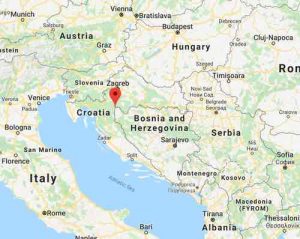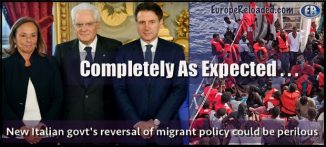
A new migration wave will hit EU, Austrian report warns
The recent arrivals have in part increased more than tenfold, and this time the largest group of migrants comes from Pakistan, says Austrian ORF Balkans expert Christian Wehrschütz.
FREEWEST MEDIA
VIENNA – Wehrschütz was on site for a local investigation undertaken by Austrian daily Kronen Zeitung last month.
 Two small towns – Velika Kladuša and Bihać (see map) – in Bosnia-Herzegovina are still hot spots on the Balkan route (see image below) as these municipalities lie near the border with Croatia, and about 100 km from Slovenia.
Two small towns – Velika Kladuša and Bihać (see map) – in Bosnia-Herzegovina are still hot spots on the Balkan route (see image below) as these municipalities lie near the border with Croatia, and about 100 km from Slovenia.
Meals are provided by the Red Cross, which is funded by the International Organisation for Migration (IOM). The IOM has sufficient means to set up a winterproof reception center but lacks a location and governmental authorisation. However, the IOM has rented a hotel to accommodate families arriving there.
The migrants’ journey continues from there with the help of smugglers and mobile phone navigation systems, moving on towards Italy and other EU countries.
 The largest group by far comes from Pakistan. According to the border police in Ljubljana, 6,000 illegal border crossing were thwarted by mid-September. This is a significant increase over the same period from the previous year, which saw only 1,200 illegal border crossings.
The largest group by far comes from Pakistan. According to the border police in Ljubljana, 6,000 illegal border crossing were thwarted by mid-September. This is a significant increase over the same period from the previous year, which saw only 1,200 illegal border crossings.
Slovenia has documented around 1,000 illegal border crossings per month since May.
One third of the illegal border-crossing migrants in Slovenia are Pakistani. The 400 Iranians who were also caught crossing the border illegally are most likely a consequence of the visa liberalisation agreement that Serbia made with Iran last year, says Wehrschütz.
In general, visa liberalisation is a magnet for illegal migration — not only in Serbia, but also in Bosnia and Herzegovina and in other countries. The border control officers of the EU border protection agency Frontex are already present at the airport in Belgrade, he said.
Currently Frontex has 124 officers in the Western Balkans deployed at so-called coordination points.
The Balkans is also a focal point of Austrian police cooperation with sixty officials who are working with thermal imaging cameras at various borders.
According to Kronen report, a support team was also present at the Albanian-Greek border during the summer. There, a special vehicle was used that can read mobile phone data to determine the nationality of migrants, routes, and cash flows to human traffickers.
To receive payment for their services, human trafficking organisations use virtual currencies as well as the so-called hawala Islamic payment system.
Human traffickers also use apps that indicate shipping traffic on the North African coast. The rescue ships of aid organisations have become “part of the business model of smugglers” because the “dilapidated dinghies” are deployed when such a ship is nearby.
In Vienna, a task force is already working with investigators from across the Western Balkans to combat illegal migration. In this team are specialists who speak African languages, including Urdu, Farsi and Pashto in order to evaluate intercepted telephone conversations.
CONTINUE READING HERE
ER recommends other articles by FreeWest Media




